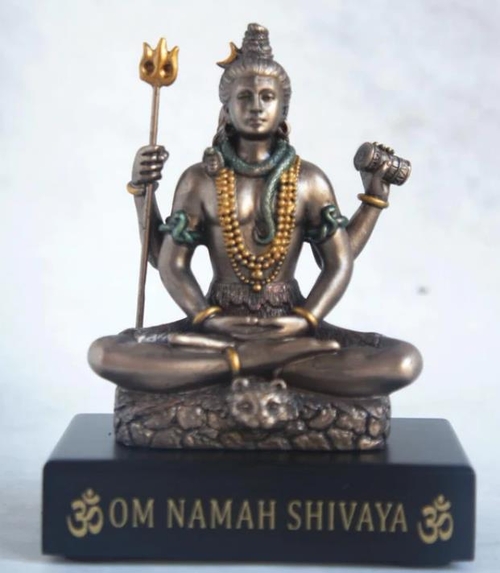Discovering the Deeper Meanings of the Lord Shiva Statue (Shopping - Other Shopping Ads)
Hot-Web-Ads > Shopping > Other Shopping Ads
Item ID 15321795 in Category: Shopping - Other Shopping Ads
Discovering the Deeper Meanings of the Lord Shiva Statue | |
Introduction Millions of worshippers have a particular place in their hearts for Lord Shiva, one of Hinduism's most beloved God. Generations have been captivated by his enigmatic representation in Shiva statues, which has encouraged them to investigate the rich symbolism contained in each aspect. In this blog, we'll learn about the secret meanings behind the holy depictions as we dig into the fascinating realm of Lord Shiva statues, which will help us better comprehend the cosmic significance they contain. At the end of this blog, we will also talk about the best place to buy Shiva statues online. Forms of Lord Shiva A statue of Lord Shiva will demand instant attention because of its striking appearance. His matted hair streams to the ground, and a third eye is visible on his forehead, signifying his unbridled divine force and superior inner perception. The "Neelakantha," or blue throat, is a prominent characteristic that represents the heroic deed of ingesting the poison drawn from the cosmos to rescue the planet. These physical characteristics serve as a reminder of the deity's might and limitless knowledge, elevating him to a respected position in Indian culture. Symbolism behind different parts of shiva idol 1. Crescent Moon on Shiva’s Head:The tiny crescent moon, which has significant importance in Hindu mythology, adds to the beauty of Lord Shiva's head. The lunar cycle links the moon to the divine feminine and serves as a symbol of immortality and eternity. The moon is an ornament that Lord Shiva wears to represent his mastery of time and the eternal nature of the cosmos. It emphasises the deity's relationship to the celestial world and serves as a reminder of the harmony and rhythm that are inherent in the cosmos. 2. Trishula in Lord Shiva's Hand Whenever we think of Lord Shiva, we always imagine him with a snake wrapped around his neck and a Trishul (Tridant). The three pointed edges of the trishul symbolise ‘trimurti', which stands for the cycle of creation, preservation, and destruction. The three Gunas, Sattva, Rajas, and Tamas, which control the characteristics of the material universe, are represented by this potent weapon as being under Lord Shiva's authority. Lord Shiva displays his cosmic authority by holding the trishula and presiding over the underlying forces that form existence. 3. The Damru in Lord Shiva's Hand The damru in his palm symbolises the dynamic figure of Lord Shiva as Nataraja, the cosmic dancer. The dance's cyclic damru sound represents the cosmos' cycle of creation and annihilation. The cyclical nature of existence, in which the universe manifests, maintains, and disappears before starting over, is embodied in this dance. The Nataraja's dance represents the holy energy interaction where harmony arises from chaos. 4. The Serpent of Lord Shiva The serpent that wraps around Lord Shiva's neck is one of their most visually appealing features. In Hindu mythology, the serpent is a powerful emblem of infinity and immortality known as "Ananta." Additionally, it represents the arousal of Kundalini energy, the cosmic divine feminine force coiling at the base of the spine. The serpent that Lord Shiva chose to wear symbolises both his control over instinctive cravings and his peaceful coexistence with the natural world. 5. The third eye of Lord Shiva The statues of Lord Shiva have an unusual eye that is half-open and half-closed and resembles a crescent moon. This interesting representation represents the never-ending cycle of creation and annihilation. It represents the idea that the universe is constantly transitioning between stages of manifestation and withdrawal, serving as a reminder to followers of the fleeting nature of material existence and the impermanence of life. This partially closed eye represents Lord Shiva's separation from materialistic aspirations and emphasises the value of pursuing spiritual enlightenment over material possessions. You can buy all the idols shown above on Satguru’s. You can also buy other God idols for pooja ghar from their store. They have a great collection of Ganesha, Buddha, Radha-Krishna and Laxmi idols.  | |
| Related Link: Click here to visit item owner's website (0 hit) | |
| Target State: All States Target City : All Cities Last Update : Aug 25, 2023 3:07 AM Number of Views: 161 | Item Owner : satguru Contact Email: Contact Phone: (None) |
| Friendly reminder: Click here to read some tips. | |
Hot-Web-Ads > Shopping > Other Shopping Ads
© 2024 Hot-Web-Ads.com
USNetAds.com | GetJob.us | CANetAds.com | UKAdsList.com | AUNetAds.com | INNetAds.com | CNNetAds.com | USAOnlineClassifieds.com
2024-05-20 (0.222 sec)